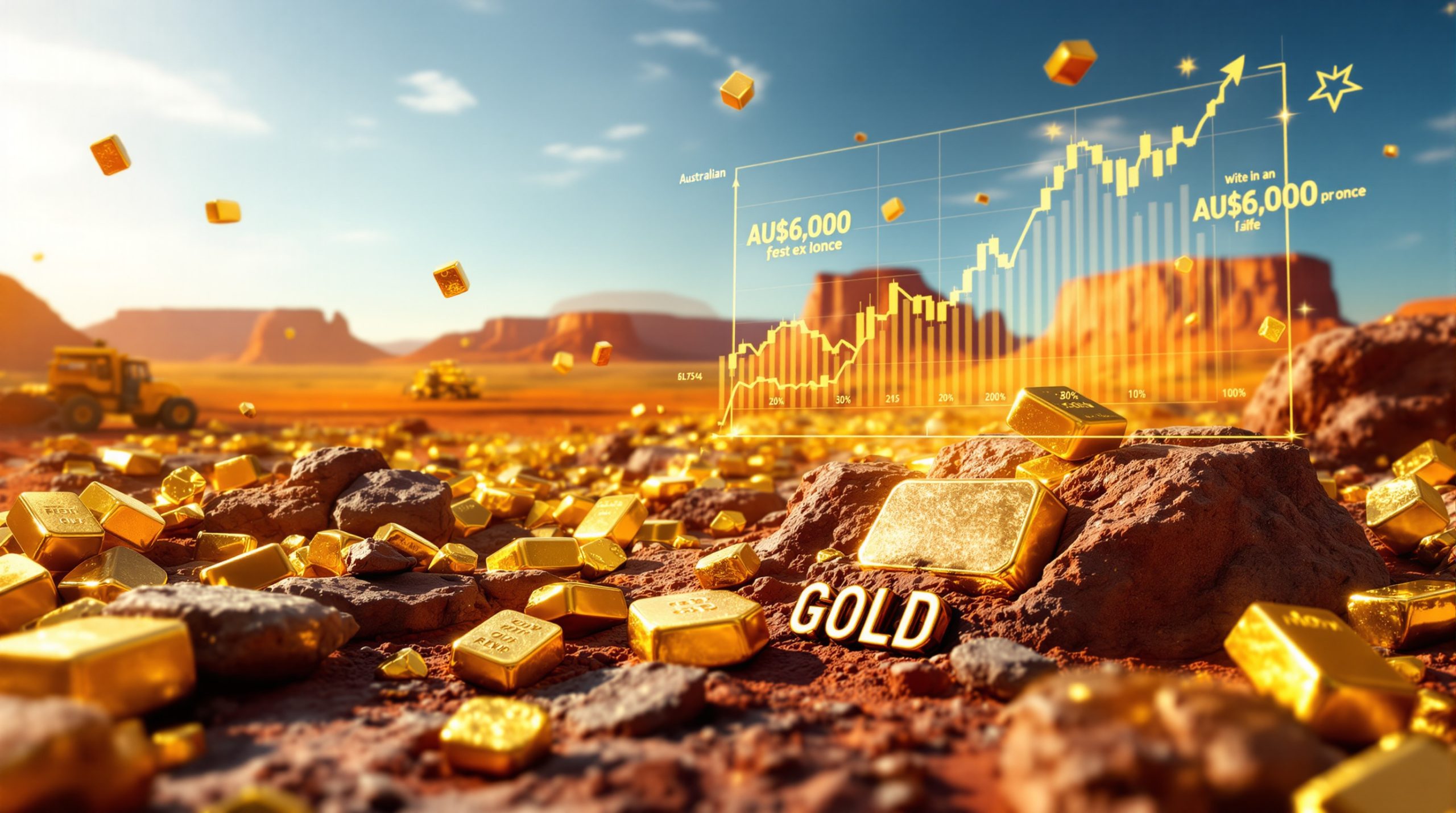Revolutionizing the Silver Economy: Innovative Extraction Technologies in the Mining Sector
In an unexpected pivot that reflects the dynamic nature of resource markets, revolutionary silver extraction technologies are emerging as a focal point for companies previously concentrated in other mineral sectors. This transformation is particularly evident as firms like Lithium Universe shift focus toward silver recovery from solar panels, creating new value streams in the circular economy.
The Untapped Urban Silver Mine
Australia stands at the forefront of a silent resource revolution happening on rooftops across the nation. As a world leader in solar panel adoption, the country has inadvertently created what experts are calling an "urban silver mine" of significant proportions.
"According to a spokesperson for the Australian Smart Energy Council, if you add up all the silver in panels sitting on rooftops all around the country, you're looking at a resource reflecting what could be among the country's largest silver mines."
This remarkable comparison highlights the scale of the opportunity at hand. Solar panels typically contain silver in the form of silver paste, which plays a crucial role in the panels' electrical conductivity. While the amount per panel is relatively small, the cumulative quantity across millions of installations represents a substantial untapped resource.
The challenge, however, lies in the economics of recovery. Traditional recycling methods have made extracting precious metals from end-of-life solar panels prohibitively expensive, creating a situation where valuable resources are often discarded rather than recovered.
Silver's Critical Role in Renewable Technology
Silver's importance in renewable energy technologies stems from its exceptional physical properties. With superior conductivity compared to copper (as referenced in ThoughtCo electrical resistivity tables), silver represents the ideal material for high-performance electrical applications.
In solar photovoltaic technology, silver paste is applied to silicon wafers to form conductive pathways that efficiently collect and transmit electricity generated by sunlight. This application makes solar panels one of the fastest-growing sources of industrial silver demand globally.
Current industry projections suggest silver demand for photovoltaic applications will continue to grow through 2030, driven by:
- Global renewable energy targets and carbon reduction commitments
- Decreasing costs of solar installation
- Increasing efficiency of solar technology
- Expansion of distributed energy systems
This growing demand, coupled with supply constraints in traditional mining, creates a compelling case for advanced recovery technologies, particularly amid ongoing silver market squeeze concerns.
How Does Modern Silver Extraction Technology Work?
The breakthrough in silver recovery comes through an elegant application of electrochemistry that represents a significant departure from traditional, energy-intensive recovery methods.
Electrochemical Low-Voltage Jet Technology
The innovative "electrochemical low-voltage jet" extraction method operates on remarkably simple principles while achieving sophisticated results. The technology requires approximately 5V across the contacts—less power than many household electronics—marking a dramatic reduction in energy requirements compared to conventional extraction processes.
The process works through these key mechanisms:
- A narrow stream of dilute nitric acid is delivered through a chemically inert nozzle positioned close to the target material
- The silver undergoes anodic oxidation when exposed to the electrolyte
- This creates soluble silver ions that dissolve into the electrolyte solution
- The dissolved silver can then be recovered through subsequent refinement steps
This approach offers several distinct advantages:
- Low energy consumption: The 5V requirement makes the process energetically favorable
- Precision targeting: The jet technology allows for selective extraction
- Minimal chemical usage: The process uses dilute solutions rather than concentrated chemicals
- Compatibility with delicate materials: The technology is gentle enough to be used on silicon microchips
From Solar Panels to Pure Silver
The journey from end-of-life solar panel to recovered silver involves a multi-stage process:
- Disassembly and sorting: Panels are broken down into component materials
- Preparation: Target silver-containing components are isolated
- Electrochemical extraction: The low-voltage jet technology selectively removes silver
- Electrolyte processing: Silver ions in solution are concentrated
- Refinement: Final processing to achieve high-purity silver
A particularly significant challenge in this process is the separation of silver from aluminum, which is also present in solar panel components. The electrochemical approach offers advantages in this regard, as the different oxidation potentials of these metals allow for selective extraction under controlled conditions.
Why Are Companies Pivoting to Silver Extraction?
The strategic shift toward silver extraction technologies reflects both market pressures and emerging opportunities in the resource sector.
The Lithium Market Reality Check
Recent market developments have created challenging conditions for companies in the lithium space. As noted in The Market Online's August 2025 report, major industry players like CATL have temporarily suspended mining operations, with one facility shutting down for three months. These disruptions have particularly affected "early-stage lithium companies, or those who are now stranded" in the development pipeline.
This market volatility has triggered strategic reassessments across the sector, with companies like Lithium Universe exploring diversification as a survival strategy. The pivot toward silver extraction technology represents a calculated response to:
- Production overcapacity in certain mineral markets
- Capital constraints affecting project development
- Changing investment priorities in the battery metals space
- Emerging opportunities in the circular economy
Silver Market Dynamics
Silver offers an attractive alternative focus due to its unique market characteristics. Unlike some industrial metals, silver maintains a dual role as both an industrial commodity and a precious metal investment.
As noted in the market analysis, silver "tracks the price of gold, and therefore, attracts rotation" from investors seeking precious metals exposure. This characteristic creates potential price support mechanisms that differ from purely industrial metals.
The silver market also benefits from:
- Supply constraints: Traditional silver mining faces challenges in meeting growing demand
- Industrial growth drivers: Multiple technology sectors requiring silver inputs
- Investment demand: Precious metals allocation in diversified portfolios
- Recycling premium: Environmentally conscious investment preferences
Many investors currently analyze the gold-silver ratio analysis to determine optimal entry points into the silver market, further driving interest in new supply sources.
Who's Leading the Silver Extraction Innovation?
The development of advanced silver extraction technologies highlights the importance of collaboration between research institutions and commercial entities.
Academic-Industry Partnerships
The pathway from laboratory concept to commercial application illustrates the value of academic-industry partnerships. The electrochemical low-voltage jet technology acquired by Lithium Universe originated from research conducted at Macquarie University, demonstrating how academic innovation can translate into practical mining industry innovation.
Such partnerships typically follow a development pathway involving:
- Basic research and proof of concept in university laboratories
- Prototype development and testing
- Intellectual property protection and licensing
- Commercial scale-up and application refinement
- Market deployment and continuous improvement
The success of these technology transfer initiatives can be measured through metrics such as:
- Patent filings and licensing agreements
- Reduction in processing costs compared to conventional methods
- Efficiency improvements in recovery rates
- Environmental impact reduction
Commercial Applications Beyond Solar
While solar panel recycling represents an immediate application for this technology, its potential extends to multiple sectors. The reported compatibility with silicon microchips suggests applications in electronic waste processing—a growing challenge as consumer electronics lifecycles shorten.
Additional applications could include:
- Recovery of silver from industrial catalysts
- Processing of mining tailings and historical waste
- Extraction from low-grade ores previously considered uneconomical
- Medical waste processing for silver recovery
Each of these applications presents scaling challenges that must be addressed, including:
- Logistics of collection and transportation
- Preprocessing and material sorting
- Quality control of recovered materials
- Regulatory compliance across jurisdictions
What Are the Economic Implications of Advanced Silver Recovery?
The emergence of urban mining as a viable resource recovery approach requires careful economic analysis to determine its commercial viability against traditional extraction methods.
Recycling Economics
The economic equation for silver recovery balances several key factors:
- Recovery costs: Energy, chemical inputs, labor, and capital equipment
- Processing scale: Minimum throughput requirements for efficiency
- Silver content: Concentration of target metal in feed material
- Market prices: Current and projected values for recovered silver
- Avoided costs: Waste disposal savings and regulatory compliance benefits
For solar panel recycling specifically, the cost-benefit analysis must consider the relatively low concentration of silver per unit compared to the logistics of collection and processing. However, as the technology matures and achieves economies of scale, the economics are expected to improve significantly.
Circular Economy Value Creation
Beyond direct economic returns, advanced silver recovery contributes to broader circular economy objectives by:
- Creating end-of-life management solutions for solar infrastructure
- Reducing dependency on primary mining with its associated environmental impacts
- Establishing domestic supply chains for critical materials
- Creating skilled employment in recycling technologies
These benefits represent value creation beyond simple metal recovery, potentially attracting premium pricing or policy support for recovered materials with superior environmental credentials.
How Will This Technology Transform the Resource Sector?
The emergence of viable urban mining technologies challenges traditional definitions within the resource sector.
Creating New Resource Categories
As technologies like electrochemical extraction mature, they enable the reclassification of materials previously considered waste into valuable resources. This evolution requires:
- New classification systems for urban and technological mineral resources
- Methodologies for quantifying and verifying these non-traditional reserves
- Accounting standards that recognize recovered materials alongside primary production
- Regulatory frameworks specific to urban resource development
The concept of "reserves" in mining traditionally applies to geological deposits with demonstrated economic viability. Urban mining extends this definition to encompass anthropogenic sources—materials already extracted and incorporated into human-made structures and products.
Investment Implications
The emergence of technology-based resource recovery companies creates new considerations for investors accustomed to traditional mining business models:
- Valuation approaches: Technology companies may warrant different valuation metrics than asset-based mining operations
- Risk profiles: Technology risk versus geological risk presents different investment considerations
- Capital requirements: Equipment-based processing versus large-scale mine development
- Growth pathways: Scalability through technology improvement rather than resource expansion
These differences suggest the potential emergence of a distinct investment category at the intersection of technology and resources, requiring specialized analysis capabilities.
What's Next for Silver Extraction Innovation?
The current state of electrochemical extraction technology represents only the beginning of a development trajectory with significant potential for improvement.
Technology Roadmap
Future development of silver extraction technologies will likely focus on:
- Efficiency improvements: Increasing recovery rates and processing speeds
- Energy optimization: Further reducing the already low power requirements
- Automation integration: Combining extraction with automated disassembly systems
- Chemical refinements: Developing more environmentally benign electrolyte solutions
- Scale economics: Engineering solutions for higher throughput processing
These improvements will further enhance the economic case for urban silver mining, potentially expanding the range of materials that can be viably processed and creating opportunities for innovative silver squeeze strategies.
Market Expansion Opportunities
The global opportunity for advanced silver recovery extends well beyond Australia's borders. Key markets include:
- Europe: With strong renewable deployment and end-of-life regulations
- China: The world's largest solar manufacturing and installation market
- United States: Growing solar deployment with increasing focus on domestic supply chains
- Japan: Advanced recycling infrastructure and limited domestic resources
Regional adoption will depend on factors including:
- Local regulatory frameworks for end-of-life management
- Labor costs affecting process economics
- Existing recycling infrastructure
- Policy support for circular economy initiatives
FAQs About Silver Extraction Technology
How much silver is typically found in solar panels?
Solar panels contain relatively small amounts of silver in the form of silver paste used for electrical contacts. The exact quantity varies by manufacturer and panel type, but typically ranges from 15-20 grams per standard residential panel. While this may seem minimal on an individual basis, the cumulative amount across millions of installations creates a significant resource.
What makes electrochemical extraction superior to traditional methods?
The electrochemical low-voltage jet technology offers several advantages over conventional approaches:
- Operating at approximately 5V, it requires significantly less energy
- The process uses dilute chemical solutions rather than concentrated acids
- Selective extraction capabilities minimize waste and secondary processing
- The gentle approach preserves other valuable materials for subsequent recovery
Can this technology be applied to other precious metals?
While optimized for silver recovery, the principles of electrochemical extraction can potentially be adapted for other metals with appropriate adjustments to the electrolyte composition, voltage parameters, and process controls. Each metal presents unique challenges related to its chemical properties and the materials with which it's commonly associated.
What are the environmental benefits of advanced silver recycling?
Environmental advantages include:
- Reduced need for energy-intensive primary mining operations
- Lower chemical consumption compared to traditional recycling methods
- Diversion of potentially hazardous materials from landfill
- Conservation of finite mineral resources through circular material flows
- Reduced carbon footprint for metal supply chains
How does urban silver mining compare to traditional silver mining?
Urban mining offers distinct differences from conventional mining:
- No exploration risk or geological uncertainty
- Distributed "deposits" rather than concentrated ore bodies
- Processing challenges versus extraction challenges
- Different regulatory frameworks and permitting requirements
- Potentially lower capital requirements but different operational costs
Key Statistics on Silver in Solar Technology
| Metric | Value |
|---|---|
| Silver content in typical solar panel | Small amounts (silver paste) |
| Conductivity comparison to copper | Higher conductivity |
| Electrochemical extraction voltage | Approximately 5V |
| Australia's solar panel installation ranking | World leader in uptake |
| Potential silver resource from Australian rooftops | Comparable to major silver mines |
Further Exploration
Readers interested in learning more about innovative metal extraction technologies and solar panel recycling can also explore related educational content from The Market Online, which offers market insights on resource sector developments and technological innovations. As the sector continues to evolve, the intersection of traditional mining, advanced materials recovery, and renewable energy will present both challenges and opportunities for investors and industry participants alike, including ongoing lithium industry challenges.
Want to Spot the Next Major Mineral Discovery?
Discovery Alert's proprietary Discovery IQ model instantly notifies investors of significant ASX mineral discoveries, turning complex data into actionable insights that can position you ahead of the market. Explore why historic discoveries can generate substantial returns by visiting our dedicated discoveries page and begin your 30-day free trial today.




